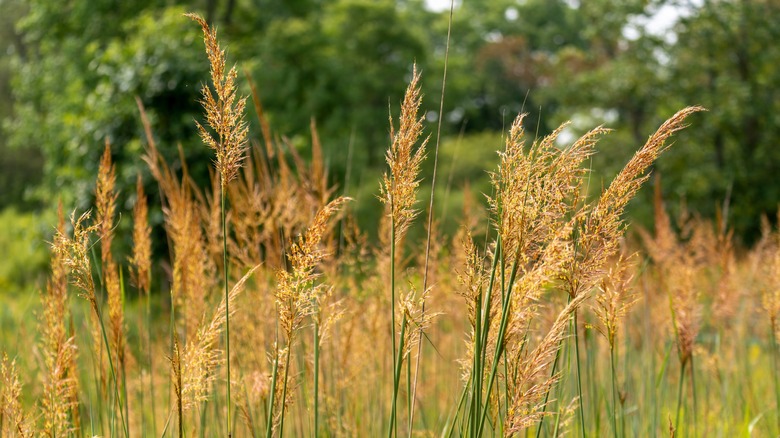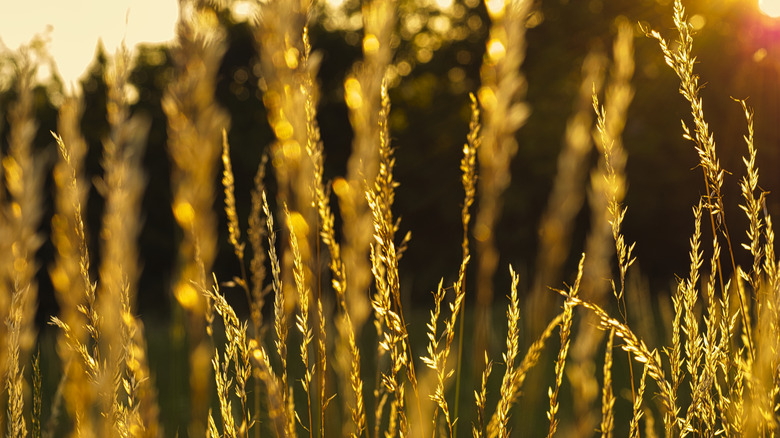How Aggressively Does Indiangrass Spread? Here's The Best Setting For Planting
Indiangrass (Sorghastrum nutans) is a warm-season tall perennial grass with blue-green leaves that turn a lovely golden yellow in the fall, producing dainty yellow-gold panicles (branched flower clusters) that darken to bronze. While the plants often attract more songbirds to your yard and add a pop of color and interest to your landscape, be aware that Indiangrass can prolifically spread through seeds on a breeze and rhizomes underground. That makes placement essential. Instead of planting in a smaller setting, this is one colorful ornamental grass you want to add to a wider landscape.
Choose an area that can support a height of up to 7 feet and a width of as much as 2 feet, keeping in mind that each plant will need some distance in between. So, small gardens and tight spaces won't work well for Indiangrass. Instead, opt for a place with a bit more elbow room so it can not only thrive but do its other job too — supporting multiple ecosystems.
Placement and uses for Indiangrass
This ornamental grass would fit perfectly in a meadow, prairie, or field, giving your land flowing beauty. The plants provide visiting birds and small mammals cover all year long to nest and feed. Plus, deer are not crazy about eating it, so there's little need to fence it in. Birds will happily feast on the seeds and bugs, such as grasshoppers and caterpillars hiding in the grass. If you have livestock, Indiangrass can be used for light grazing and making hay. It also attracts several different pollinators besides birds, like bees and butterflies.
The Missouri Botanical Garden notes that Indiangrass loves full sun in zones 4 through 9, and prefers well-drained soil. If the ground is too moist, it can fall over, so don't overwater. If you happen to live in a dry climate, this ornamental grass can thrive with little water and is drought-resistant, making it a perfect addition to your open meadow or prairie. To help prevent it from spreading too quickly and to keep it relatively contained, experts recommend cutting the grass all the way down either in late winter or before new leaves form in the spring. You can also remove the grass tops before the seeds mature, or use companion plants like black-eyed Susans and purple coneflowers to help manage the spread. Since birds and other mammals like to nest in the tall grass, be sure not to do any pruning or harvesting during nesting season.

